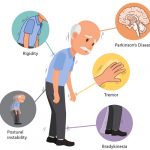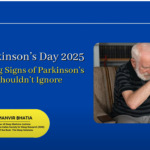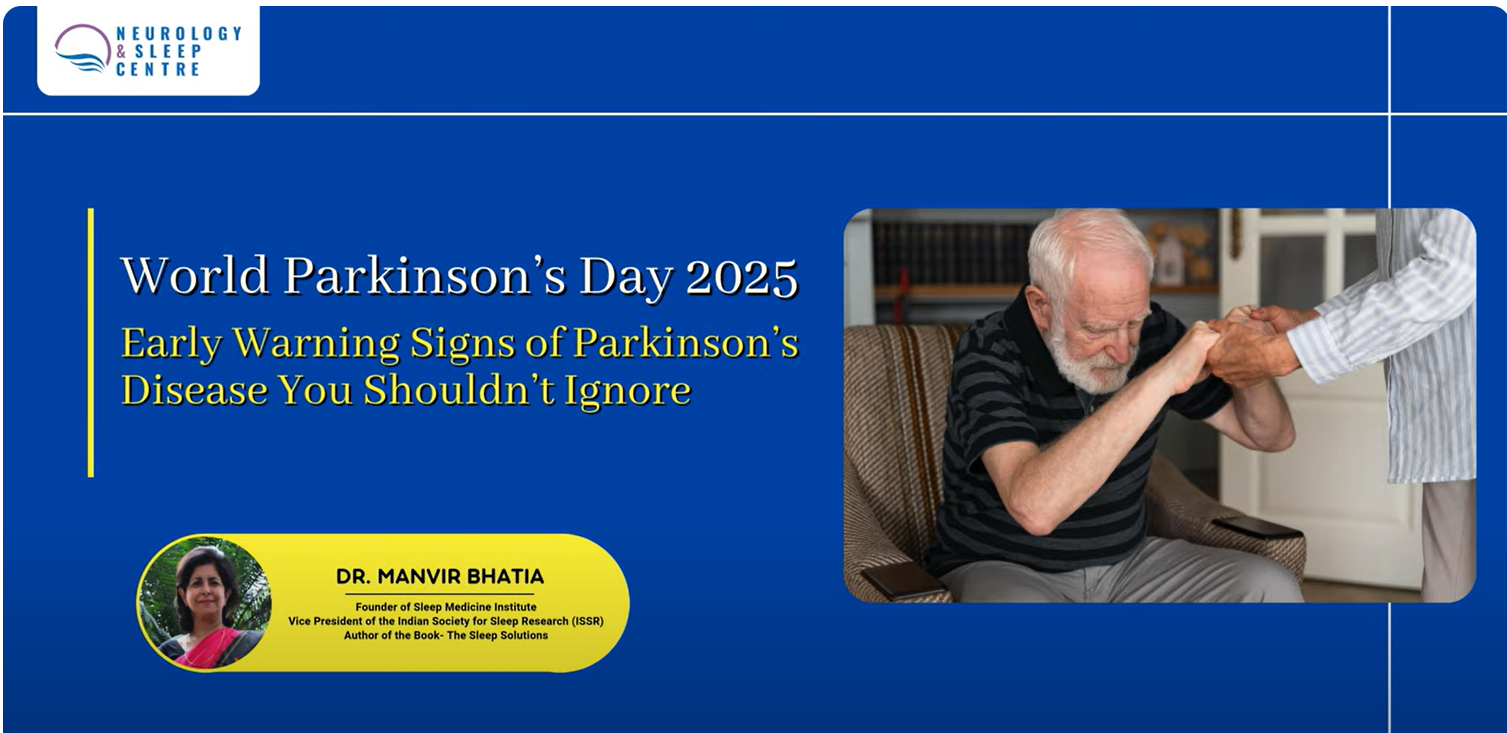Written by Arshad and Reviewed by Dr. Manvir Bhatia
Parkinson’s Disease (PD) affects more than 10 million people worldwide, and its incidence is rising with our aging population. Traditionally known for causing tremors and movement difficulties, Parkinson’s is actually a multisystem neurodegenerative disorder—often with early symptoms that have nothing to do with movement at all.
That’s where the real challenge lies: many early signs are subtle, misunderstood, or dismissed, leading to delays in diagnosis and treatment.
Let’s dig deeper into the early warning signs of Parkinson’s Disease—and why recognizing them matters.
Why Early Diagnosis of Parkinson’s Matters
By the time a patient is diagnosed based on motor symptoms, studies show that 60–80% of dopaminergic neurons in the brain’s substantia nigra may already be lost. Early recognition allows:
- Timely initiation of therapy to improve symptoms and slow progression.
- Better planning for future care and quality of life.
- Potential access to neuroprotective trials and interventions.
The Often Missed Early Symptoms of Parkinson’s Disease
Parkinson’s is more than just tremor. Here’s what you (or your loved ones) should watch for—some of these symptoms can appear 5 to 10 years before the classic motor signs.
1. Loss of Smell (Anosmia)
One of the earliest and most frequently overlooked signs.
A study by the National Institute on Aging found that up to 90% of people with PD experience olfactory loss, often years before diagnosis.
“I thought it was just due to age or allergies,” many patients say in hindsight.
2. Chronic Constipation
Not just a nuisance—it can be an early sign of Parkinson’s-related autonomic nervous system dysfunction.
A 20-year longitudinal study published in Neurology showed that men with infrequent bowel movements were four times more likely to develop PD.
3. REM Sleep Behavior Disorder (RBD)
Do you or someone you know act out dreams—kicking, shouting, or falling out of bed while asleep?
This isn’t just poor sleep—it may be REM Sleep Behavior Disorder, considered one of the strongest prodromal (pre-motor) signs of PD.
Around 30–50% of people with RBD will go on to develop a synucleinopathy like Parkinson’s within 10 years.
4. Mood and Mental Health Changes
Depression, anxiety, or apathy may show up before any motor signs.
This happens due to early changes in dopamine, serotonin, and norepinephrine pathways.
Around 40% of PD patients experience depression before motor symptoms are identified.
5. Micrographia (Small Handwriting)
A subtle but telling sign: handwriting becomes smaller and cramped, often gradually.
It reflects early bradykinesia (slowness of movement).
Try comparing old notes or signatures—you might notice a surprising difference.
6. Soft or Fading Voice (Hypophonia)
Family and friends may comment that your voice is “too soft” or “hard to hear,” even though you think you’re speaking normally.
7. Tremor at Rest
This is the most widely recognized symptom—but it often appears later, and only in 70% of patients.
The tremor usually begins on one side, often in the hands (“pill-rolling tremor”).
8. Stiffness and Reduced Arm Swing
Subtle rigidity may show up as muscle pain or less movement on one side while walking. Early signs can be misattributed to arthritis or aging.
9. Balance Issues and Frequent Falls
While postural instability usually appears in later stages, minor balance issues or tripping can begin earlier than we think.
When Should You See a Doctor?
If you or someone close to you has two or more of these symptoms, especially at a younger age (under 60), it’s worth consulting a neurologist or movement disorder specialist. Early evaluation may include:
- A detailed clinical exam
- Imaging like DATscan (if needed)/ F DOPA -PET
- Sleep studies (especially for REM behavior disorder)











